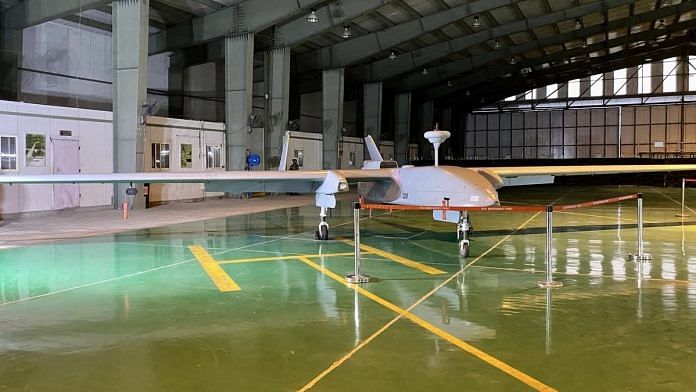Misamari, Assam: As tensions with China mount at the Line of Actual Control (LAC), the Army has made massive changes to its drone deployment in the region, and is banking on its fleet of Israeli Remotely Piloted Aircraft (RPA) to keep a close eye on the activities of the People’s Liberation Army (PLA), sources told ThePrint.
The Army is also waiting for new satellite link-enabled RPA, commonly known as drones, and upgradation of existing ones.
The force has more than doubled its drone sorties at the LAC since the stand-off with China began in May last year, and is flying the Israeli Heron MK 1 day and night, said sources in the defence establishment.
The focus on aviation in wake of hostilities with China has been intensified to the extent that the Army has set up a new Aviation Brigade in the Eastern Command this year to coordinate the action, and to have a more localised control.
The drones in the Eastern Command have also been brought under the Army Aviation Corps from the Artillery, in a phased manner that began last year. This change has been made across the Army since last year to ensure that all flying assets of the Army remain as a single cohesive unit, sources said.
When the drones were first procured way back in early 2000s, the machines were primarily used for target sightings and hence it was under the artillery which had the long range, sources explained.
“But now the drones are used for a wide range of operations and hence a decision has been taken to ensure that all flying assets of the Army come under the Army Aviation,” said a source.
Sources said all artillery drone pilots have now moved to the Aviation Corps as part of the change.
Also read: As India-China talks fail & tensions rise, Delhi concerned about another ‘Galwan-like flare-up’
Focus on new drones from Israel, upgrades
Speaking about drones, sources said four new Heron Mk 2 drones, which is about to get shipped to India after being procured under emergency contract, will be deployed exclusively for the LAC.
While the drones were to be leased initially, Israel sought direct purchases as its leasing experiment with a European country did not live up to expectations.
The Heron MK 2 will have longer endurance than its predecessor, and come with a more powerful engine and better radar.
“The drones are really the backbone of our surveillance. The Heron MK 1 has an endurance of about 24-30 hours and can transmit back live video feed and images of about 200-250 km (range),” said a second source, who works at one of Army’s drone bases in the Eastern Command.
A third source said the plan is to have satellite link-enabled drones.
“With satellite-linked drones, the drones will have almost unlimited range of transmission. This means that these systems can be fully exploited to their endurance capabilities,” the second source said.
The Army is also keen on signing Project Cheetah, under which India’s Heron drones will be upgraded with satellite links and armed with Israel’s help. In the first phase of the project, drones will upgraded, and in the second phase will be armed with missiles.
There are no plans to buy more Heron MK 2 at this juncture and the focus is on Project Cheetah, sources said.
The Indian Air Force, which is the lead agency for this project, has budgeted the programme for the later quarter of next fiscal, sources said.
Integrated ‘sensor to fire’ focus
Sources explained that the focus has been on ensuring that the “sensor to shooter” link is clearly established. This meant that the drones are able to communicate with a central system, which can then be in contact with other operators of different systems to ensure that pinpointed firing takes place, or realignments in deployment is carried out if needed.
The mechanism will allow anyone sitting in the war room in the South Block in the national capital to see the live feed being sent by the drones which operate at an altitude of about 30,000 feet.
There has also been a renewed push to fill up the existing squadrons of Advanced Light Helicopters (Dhruv) and its weaponized version (Rudra) to their sanctioned strength, sources said.
Deployment of a larger number of Rudra helicopters meant that more missions can be carried out in the high altitude regions close to the LAC as they provide the necessary protective cover to the Dhruvs which are used to transport soldiers, they said.
The other big focus has been the upgradation of infrastructure in the region. Besides all-weather roads, bridges on airfields along the LAC, including the Advanced Landing Grounds, have been paid attention to.
Also read: Eye on mega deal with Navy, Dassault will fly Rafale Marine to India in 2022 for showcase trip



